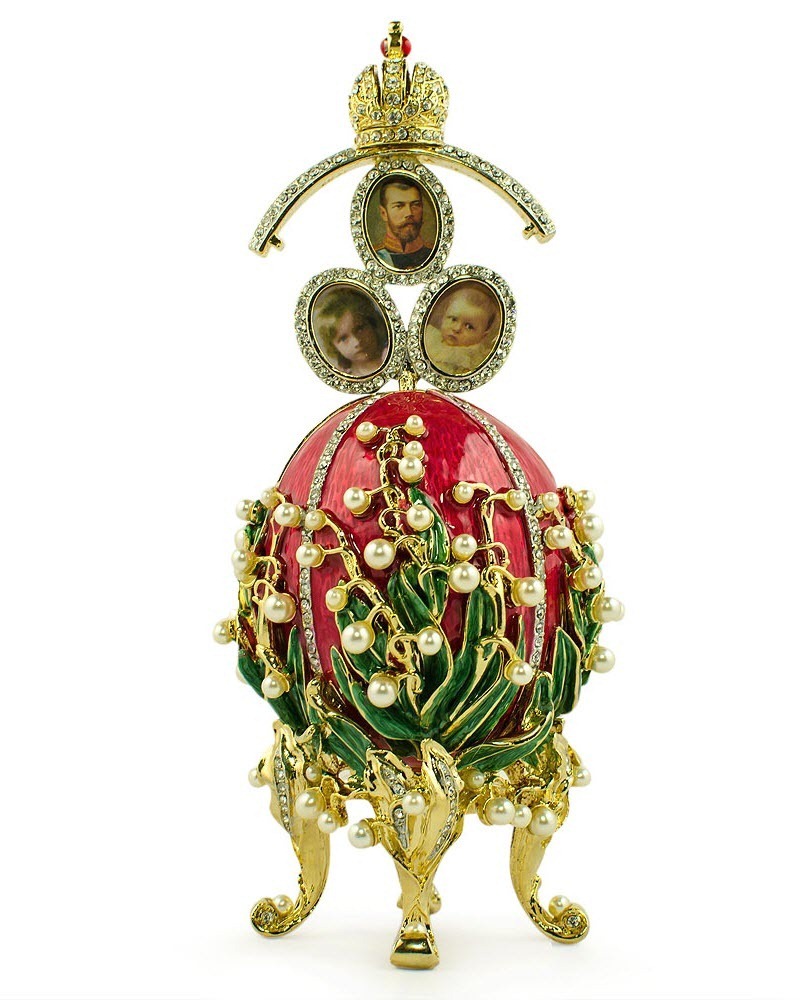Easter is the most important celebration for Russian orthodox Christians, just like Christmas is in the West. Devoted Christians bring hand-painted eggs to the Church to be blessed, and then present them to family and friends.
In 1885, Russian Tsar Alexander III too decided to gift his wife an Easter egg, but this wasn’t going to be an ordinary chicken egg, because it wasn’t an ordinary year. 1885 marked the twentieth anniversary of the Czar and his wife Czarina Maria Fedorovna’s marriage, and the Czar needed an exceptional gift to impress his wife. So Alexander commissioned Peter Carl Fabergé, the royal jeweler, to create for him the most precious Easter egg.
Following instructions from the Emperor himself, Fabergé designed a beautiful white enamel egg that looked like a real egg, but when opened, revealed a golden yolk inside. Within the yolk was a golden hen, and concealed within the hen was a diamond miniature of the royal crown and a tiny ruby egg. Empress Maria was so delighted by the gift that Alexander appointed Fabergé a "goldsmith by special appointment to the Imperial Crown" and instructed him to create a new Easter egg every year, and a tradition was born.
Fabergé was to design a unique egg each year, and each egg was to contain a small surprise. Fabergé and his team of highly skilled craftsmen worked in complete secrecy for several months on each egg. Not even the Tsar knew what form the eggs would take. Fabergé chose each design to represent an event revolving the Royal family, or milestones and achievements of the Romanov dynasty, such as commemorating the fifteenth anniversary of Nicholas II’s accession to the throne, or the three-hundredth anniversary of the House of Romanov.
The surprises too had constant link with the Imperial court. These ranged from a miniature replica of the Coronation carriage, to a heart-shaped frame on an easel with 11 miniature portraits of members of the Imperial family. All the eggs were made of precious metals such as gold and platinum, and studded with diamonds, emeralds, rubies and other precious gems. One of the most expensive was the 1913 Winter Egg, which would have cost £2.36 million in today’s money. The egg was auctioned off in 2002 for US$9.6 million.
After Tsar Alexander III’s death, his son Nicholas II carried on the tradition. From 1894 onwards, Peter Carl Fabergé created two eggs each year —one for Nicholas II’s wife Empress Alexandra Fedorovna, and one for his mother, Maria Fedorovna. Over a period of thirty-two years, until the Russian revolution of 1917, that saw the end of the czar’s rule, the goldsmith and his company produced for the Imperial family fifty of the most opulent and extravagant Easter eggs the world has ever seen. They became the Fabergé’s greatest and the most enduring achievement.
Of the original fifty eggs, forty-three survive today. These rare and million-dollar Easter eggs are now in the hands of different private collectors, museums and institutions across the world.
The first Fabergé egg, “Hen Egg”, 1885. The diamond miniature of the royal crown and the ruby egg was lost.
The Caucasus Egg, 1893.
The Gatchina Palace egg, 1901.
The Rose Trellis Egg, 1907
The Imperial Coronation Egg, 1893

The Lilies of the Valley Egg, 1893

The Renaissance egg, 1894. It was the last egg that Alexander presented to Maria.
The Rosebud Egg, 1895
The Memory of Azov Egg, 1891.
The Moscow Kremlin Egg, 1906.
The Peacock egg, 1908
Sources: www.faberge.com / Wikipedia

























Comments
Post a Comment